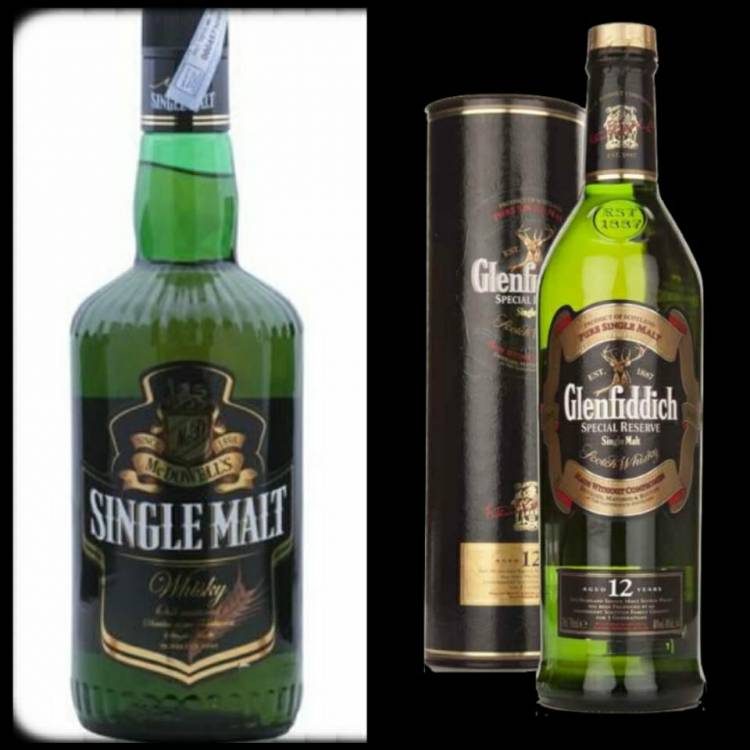What is IMPUGNED TRADEMARK
The Indian law of trademarks is enshrined the new Trade Marks Act, 1999 came into force with effect from September 15, 2003. The old Trade and Merchandise Marks Act, 1958 was repealed at the same time. The new Trademarks Act of 1999 is in line with the WTO recommendations and is in conformity with the TRIPS Agreement to which India is a signatory.

TRADEMARK:
The Indian law of trademarks is enshrined the new Trade Marks Act, 1999 came into force with effect from September 15, 2003. The old Trade and Merchandise Marks Act, 1958 was repealed at the same time. The new Trademarks Act of 1999 is in line with the WTO recommendations and is in conformity with the TRIPS Agreement to which India is a signatory. Trade Mark on a product gives an assurance to experts, purchaser, and consumer about a certain level of quality in the product. The Trademark Act, 1999 under Section 2(1)(zb) defines “trade mark” as a mark capable of being represented graphically and which is capable of distinguishing the goods or services of one person from those of others and may include shape of goods, their packaging and combination of colours. Furthermore, the Act also provided for definition of ‘mark’ under Section 2(m) which enumerates a mark to include a device, brand, heading, label, ticket, name, signature, word, letter, numeral, shape of goods, packaging or combination of colours or any combination thereof.
There are two essential ingredients for trademark registration, they are:
- The Mark is Capable of Being Represented graphically i.e., as representation of a trademark for goods or services represented or capable of being represented in paper form and include representation in digitized form. Such graphical representation of a trademark also encompasses within its purview shape of goods, their packaging, combination of colours, in other words it brings within its ambit “trade dress”. This essential requisite for qualification as a valid trademark merely implies that the mark should be capable of being put on the register in a physical form and also being published in the Journal.
- Capable of Distinguishing Good and Services of One Person from Those of Others i.e., means a mark “which is capable of distinguishing the goods or services of one person from those of others”. Therefore, the use of a mark that is not capable of distinguishing the goods of such proprietor of the trade mark would not qualify for the protection under the TM Act. This requisite of a trademark primarily enumerates that a trademark must be distinctive i.e. it should not be devoid of a distinctive character.
ABSOLUTE GROUNDS FOR REFUSAL OF TRADEMARK REGISTRATION:
Section 9 of the TM act enumerates grounds on which a trademark registration can be absolutely refused. The Act provides that following marks can be refused:
- Marks that are devoid of any distinctive character;
- Marks which serve to designate kind, quality, intended purpose, values, geographical origin or the time of production of goods;
- Marks which have become customary in the current language or in the established practices of trade;
But the section provides the exception that mark shall not be refused registration f prior to date of trademark application; the mark has acquired distinctive character or is a well-known trademark.
- Marks that may cause deception or confusion in public;
- Mark comprises of matter that is likely to religious sentiments any class of people;
- Mark comprises of scandalous or obscene matter;
- Mark is prohibited under the Emblems and Names (Prevention of Improper Use) Act, 1950;
- If the mark consists of shape of goods which results from the nature of the goods themselves;
- Mark consists of shape of goods which is necessary to obtain a technical result;
- Mark gives substantial value to the goods;
Further section 11 provides that mark shall not be registered if:
- If the mark causes likelihood of confusion on part of the public i.e. likelihood of association with the earlier trademark;
- If the mark is identical to a well-known trademark in India and use of the later mark may be detrimental to the distinctive character of the well-known trademark;
- If the mark’s use in India is liable to be prevented by law of passing off or copyright law;
TRADEMARK PASSING OFF:
The Trademark Act, 1999 under Section 27 provides for the remedy of passing off for misuse of an unregistered trademark by the Defendant. It enumerates that no person shall be entitled to institute any proceeding to prevent infringement of an unregistered trademark. Section 27 of the Act recognizes common law rights of the trademark owner to take action against any person for passing of goods as the goods of another person or as services provided by another person or remedies thereof. The remedy made available under Section 27 protects the rights of the proprietor of an unregistered trademark to register complaint against another person for passing off his goods as goods the goods of proprietor. An unregistered proprietor of trademark can also oppose an application for registration on grounds as enumerated under Section 11 of the Act.
TRADEMARK INFRINGMENT:
Under Section 29(1) infringement results if the mark is "identical with or deceptively similar to" the registered trade mark and is in relation to the goods and services for which the trademark has been registered. The use of infringing or impugned mark must render it "likely to be taken as being used as a trade mark". Under Section 29(2)(a) infringement occurs where the impugned mark is identical with the registered trademark and the goods or service for which the impugned mark is being used is similar to the goods and services covered by the registered mark. Under Section 29(2)(b) infringement occurs where the impugned mark is similar to the registered mark and the goods and the services for which is used is identical with or similar to the goods and services for which the registered mark is used. Under Section 29(2)(c) infringement occurs where the impugned trade mark is identical to the registered trade mark and the goods or services for which the impugned mark is used is also identical to the goods/services covered by the registered trade mark. Therefore, under Section 29(1), (2) and (3) for infringement to result (i) the impugned mark has to be either similar to or identical with the registered mark and (ii) the goods or services for which the impugned mark is sued has to also either be identical with or similar to the goods or services for which registration has been granted. The scenario is different as regards Section 29(4) of the TM Act 1999. For infringement to result under Section 29(4), the following conditions are required to be fulfilled :
(i) the person using the impugned mark is neither a registered proprietor in relation to the goods and services for which the mark is registered nor is using it by way of permitted use
(ii) the impugned mark must be used in the course of trade
(iii) the impugned mark has to be either similar to or identical with the registered mark
(iv) the impugned mark is used for goods or services different from those for which registration has been granted;
(v) the registered trade mark has a reputation in India;
(vi) the use of the impugned mark is without due cause, and takes unfair advantage of or is detrimental to,
(a) the distinctive character of the registered trade mark; or
(b) the reputation of the registered trade mark.
In nutshell, it can be stated that any mark which cause the likelihood of confusion and consequential injury to the proprietor of the mark and the need to protect the public from deception, then that mark will be termed as ‘Impugned mark’ and if any of the one above conditions is met then the suit of infringement of registered trademark under the plea of the prevalence of confusion in the mind of the public as to the association of goods or services provided under impugned mark to those of registered trademark.
CASE LAWS:
William Grant & Sons Ltd. v. McDowell & Co. Ltd.
The dispute did not concern similar marks per se but a deceptively similar trade dress. In this case, although the Indian entity was using the mark 'McDowell's Single Malt whisky' for its liquor product, which was absolutely distinct from the foreign claimant's 'Glenfiddich' mark, it was selling its product under a label that had a similar get up as that of the claimant's product. The Delhi High Court observed that Glenfiddich' whisky has trans-border reputation in India, and the claimant's 'Glenfiddich' whisky was available at duty free shops in India. Another observation made by court that whisky is a potable product, it is the label on it which makes the product distinctive and therefore, if a deceptively similar label is used for another whisky which does not taste like the claimant's whisky it would injure the reputation of the claimant. Finally, while rejecting the argument of the Indian company that people would not be misled as the impugned whiskey's have totally different names, the High Court held that, the Glenfiddich whisky, having admittedly existed prior to coming into the existence of the defendant. The reputation of Glenfiddjch which is inseparably linked with the label of Glenfiddich Single Malt Whisky bottle is bound to be eroded by another Single Malt Whisky which bears the label which has very close similarity to the label of the plaintiff.

Century 21 Real Estate LLC. v. Century 21 Main Realty Pvt. Ltd.

An injunction was sought against the use of the mark 'CENTURY 21'. The defendant company, which was in the same field of business as that of the claimant, i.e. real estate brokerage services, was using the 'CENTURY 21' mark of the claimant in its corporate name. Though the claimant was not doing business in India, it alleged both infringement and passing-off as it held trade mark registrations in its name in India for the mark 'CENTURY 21'. The claimant put evidence before the court which included trade mark registrations for the impugned mark in several countries, advertisements in newspapers and magazines having circulation in an number of countries but not India, global awards and accolades received by the claimant company over the years and independent surveys quoting 'CENTURY 21' as one of the top brands in the United States. The claimant put forth a plethora of evidence before the court. However the Justice of Delhi High Court rejected all the argument of the claimant and held that the goods or advertisements bearing foreign marks had no circulation in India the claimant was neither providing any services in India nor advertising in any media having circulation in the Indian Territory unlike the Whirlpool case, the Glenfiddich case and the Benz case. It was also held that mere registration of the mark does not amount to use of the mark in India. He, therefore, decided in favour of the defendant company holding that the claimant had failed in establishing its trans-border reputation associated with the 'CENTURY 21' in India.
Research By -
Sameeksha Shukla
BB.A LL.B (Hons.) specialization in Corporate Law ( 5th year)












